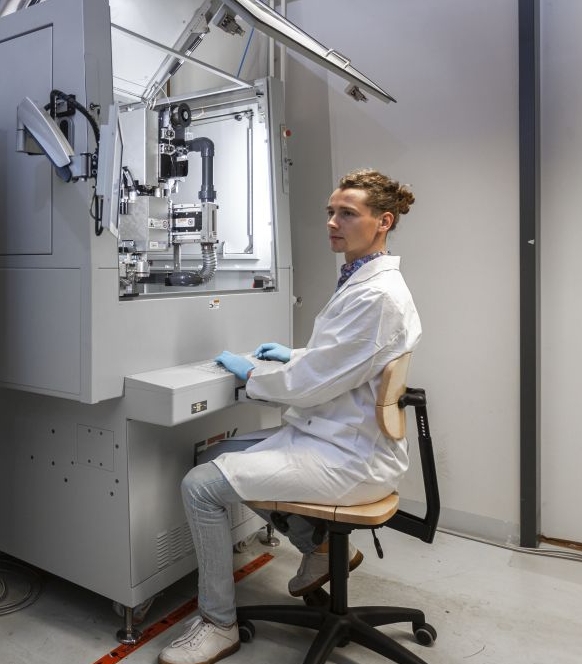| Duration: | 05/2021 - 04/2024 |
| Contracting Authority/ Sponsors: | Federal Ministry of Economic Affairs and Climate Action (BMWK) |
| Project Partners: | BMZ Germany GmbH, F & K Delvotec Bondtechnik GmbH |
| Project Focus: |
Leopard – Laser Bonding as a Gentle Interconnection of Next-Generation Temperature-Sensitive Cells for the Energy Transition

Battery storage helps balance fluctuations in renewable electricity production, electrify the transportation sector, and provide portable power to the growing field of consumer electronics. To achieve the current and voltage characteristics of battery-powered devices, individual battery cells are assembled into battery modules and electrically connected in series or parallel. The aim of the »Leopard« project is to further develop a laser bonding system by using pulsed laser beam sources. In this context, the interconnection technology of laser bonding is to be established through detailed process qualification for the use of high-current-capable cell connectors. Reliable interconnection will be supported by the development of cell connector sizing models.
Further develop of the interconnection system
The goal is to further develop the laser bonding system by evaluating novel laser beam sources and integrating innovative process diagnostics to observe process signals. The advantage of the laser bonder to contact various battery cell types on one side will be further developed in the project. In order to establish the laser bonding process in automated production, boundary conditions for quality assurance during production are being developed and a requirements profile is being drawn up. For this purpose, battery packs will be designed, set up as a demonstrator and validated.
Investigation and optimization of the interconnection processes
With the optimization of the interconnection, the project aims at the central production step in the manufacture of battery modules. In order to understand the laser bonding process in detail, the resulting joints are examined in their microstructure as well as mechanically and electrically in great detail. Our wide range of characterization methods are used for this purpose. Sensitive process parameters are derived from the analysis results. The knowledge gained is used to develop intelligent process control for laser bonding of high-current cell connectors. In addition, a battery interconnection concept will be developed that enables the re-use of battery packs.
Benchmarking for laser bonding
The demonstrator battery packs produced using the laser bonding process will be intensively tested and inspected. Among other things, both the transportability in terms of UN38.3 and the mechanical and electrical properties of the demonstrators are checked. The laser bond battery packs are thus compared with industrially produced battery packs. Laser bonding is thus evaluated in terms of competitiveness and industrial applicability.
Model development for optimal connector dimensioning
On the basis of the experimentally obtained findings and the electrical, thermal and mechanical parameters of the materials used and the production-related boundary conditions, models are being developed that allow the calculation of the optimum connector dimensions for different battery pack geometries. This enables battery pack manufacturers to easily and quickly calculate an interconnection of battery cells. For this development, FEM simulations of the electrical, thermal and mechanical properties of the battery modules, cells and cell connectors will be carried out in the project.
Techno-economic evaluation of system and process development
The further developments of the system will also be examined from an economic point of view in the project. The technical and economic benefits of the process and system technology for customers will be worked out in comparison with the available system inventory. How the new technologies fit into the requirements of the variable market will also be evaluated.